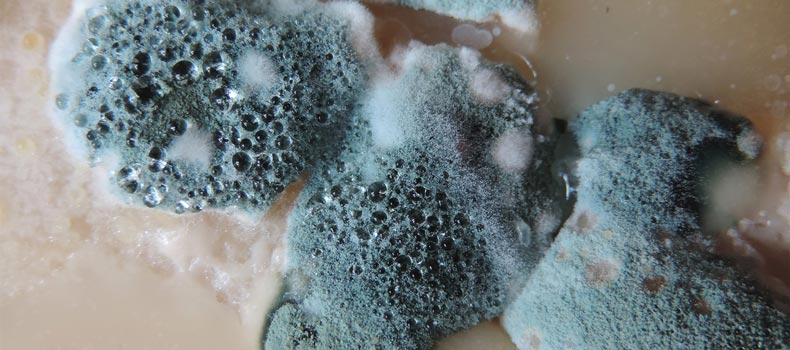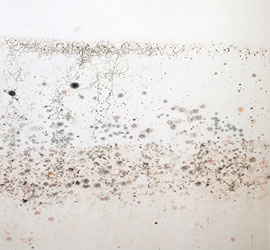
Mold spores are virtually everywhere, making mold difficult to avoid. While it's usually harmless to humans, mold can become a problem when it grows indoors. Indoor mold growth can occur anywhere that has a supply of moisture. Places like an improperly ventilated attic, crawlspace, improperly installed insulation, plumbing leaks, flooded areas, and more. Mold growth can even start in as little as 24 hours.

Mold is not only disgusting, it's also potentially dangerous. Some people have sensitivities to mold (allergies), and can experience Hay Fever like symptoms year round. In the cases of infants, elderly, asthmatics, and people with suppressed immune systems or lung disease can have much more severe issues. Mold may even be linked to respiratory illnesses in otherwise healthy children. Research in this area is still ongoing, so all mold should be treated as hazardous for the safety of your family.
Black mold acquired a very ominous reputation after being connected to a cluster of acute pulmonary hemorrhage/hemosiderosis (bleeding of the lungs) cases among infants in Cleveland, Ohio in 1994. Although black mold is less common than many other types of mold, it is not rare. While research into the connection between black mold and major health problems is still in progress, it should be treated similarly to other serious health threats like asbestos, lead, and radon.
I'll search for any indications of current or previous indoor mold growth, and give recommendations to eliminate the problem. Common problem areas include the attic, crawlspace, basement, and around plumbing fixtures — though mold can grow anywhere as long as there's moisture. The most important part of any mold inspection is identifying the moisture source. The mold cannot be eliminated unless the moisture problem is resolved.

A mold inspection also involves taking samples from surfaces where mold growth is suspected, as well as taking samples from the air within the home using specialized equipment. These samples are then sent to a nationally certified laboratory to identify the types and concentration of mold growing within the structure.
With intra-wall mold sampling, or wall cavity sampling, I can take a sample of the air within a wall or ceiling to detect mold growth that is hidden or out of reach. In some cases there may be evidence of a moisture problem within the wall, but other times there may not be any visual evidence of the problem on the surface.
While regular surface and air samples can tell me if there are elevated levels of mold spores at the time of the inspections, carpets tend to retain evidence of mold growth over a long period of time. Even if the carpet has been thoroughly cleaned beforehand, it will still likely hold evidence of previous mold problems in the property deep within. I use a vacuum cleaner with a special mold-sampling cartridge to check for the presence of mold spores.
I & O Inspections provides mold inspections in Dallas-Fort Worth, Arlington, Denton, Hillsboro, Mineral Wells, Rockwall, and everywhere in between. Not sure if that's you? Give me a call at (682) 238-3844 or send me an email.